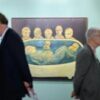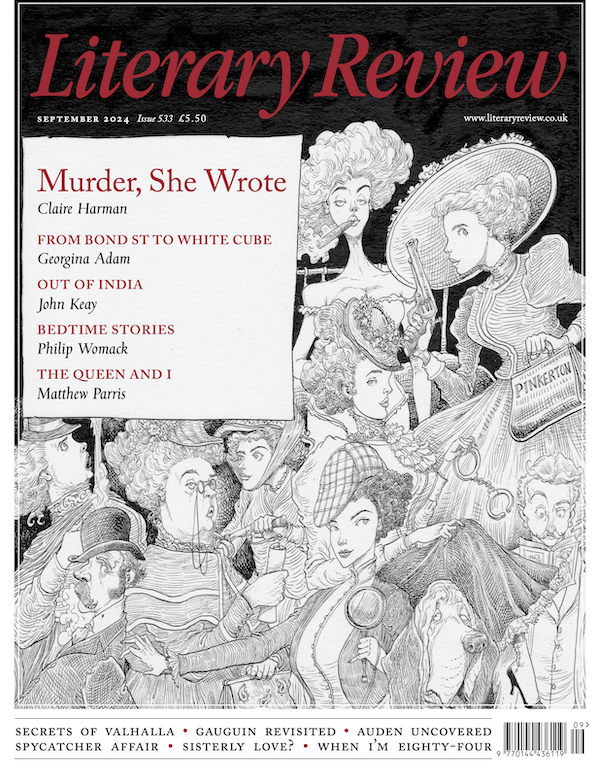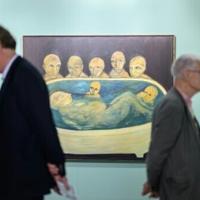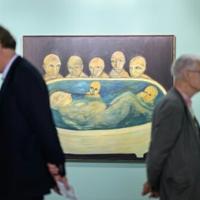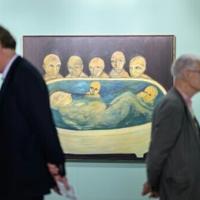
It is hard to think of a person more qualified to write this book. In addition to being an art historian, a prolific writer, a lecturer and a broadcaster, James Stourton is also a former chairman of Sotheby’s UK. He joined the auction house in 1979 and left in 2012 to become a senior fellow at the Institute of Historical Research.
Throughout his long career in the art market, he has seen all sorts, from the scholars to the rogues of the title. The latter include ‘runners’ and ‘knockers’: jacks-of-all-trades, who, in the pre-internet age, would scour provincial auction houses or go from door to door looking for promising finds to bring up to London and make a few quid. Sometimes they struck gold. Stourton recounts how one bought a picture that turned out to be a Hogarth, and another offered ‘something nice’ – a Paul de Lamerie silver salver – to the renowned Mayfair dealer Daniel Katz. ‘Is it hot?’ Katz asked. ‘Lukewarm,’ replied the runner. Stourton concludes, ‘Danny sent him away.’
Above all, Stourton has seen a profound transformation of the art market: a change in the balance of power between auction houses and dealers, the arrival of art fairs and the growing interest in contemporary art. Chapters are devoted to specialities such as silver, furniture, European porcelain, British watercolours and Victoriana, the markets for which are now a shadow of their former selves. Other markets – for Chinese art and tribal art – were once important in London but have now moved to other places, such as Hong Kong, Brussels and Paris.
Stourton has known everyone in the London art market, and the book is studded with amusing anecdotes about the characters. One such was the dealer Roy Miles, a flamboyant figure in the 1970s and 1980s, who back then tried to capture the Arab market with a £1 million art exhibition. Stourton reproduces Miles’s tale about taking a member of a Middle Eastern ruling family around the show: ‘I walked our grand guest around … as I did so, I identified each painting. “This is a Thomas Gainsborough”; “Here is a George Stubbs”; “A fine Sir Alfred Munnings” and so on. The Prince did not say a word until we reached the door, when he turned and asked me “How do you find time to paint all these pictures?”’
The seamier side of the art market is much in evidence here, notably in a chapter devoted to Geraldine Norman, the ground-breaking economist and journalist who shattered the secrecy of auction house practices in 1969. As well as forcing the salerooms to reveal their ‘bought-ins’ (lots that hadn’t found buyers and were announced as ‘sold’ – to made-up purchasers), she uncovered the truth about a whole series of expensive ‘Samuel Palmers’ that were in fact the work of a prolific and embittered forger, Tom Keating. He claimed that he had flooded the market with up to two thousand ‘Sexton Blakes’ (‘fakes’, in Cockney rhyming slang) by Palmer, Degas, Constable and others. Norman went on to help Keating write a memoir, The Fake’s Progress, the title a play on the name of one of Hogarth’s series of paintings.
Stourton explains why antiquities have become such a problematic field – because of looting, lack of provenance information and seriously dodgy cover-ups by auction houses. He tells the tale of a dealer called Robin Symes, who rose like a comet, lived lavishly for a while with his wealthy Greek partner Christo Michaelides, then crashed to earth. During their heyday, the pair sold costly antiquities to stellar American clients including the Getty Museum and the Metropolitan Museum of Art. Then Michaelides died unexpectedly in Symes’s home. The subsequent legal battle between Michaelides’s family and Symes revealed a web of deceit, looted artefacts and faked provenances, and Symes finally went to jail for contempt of court. According to Stourton, ‘Even now his affairs have not been fully unravelled and objects from his storage continue to surface.’
Then there is the extraordinary story of the Sevso silver, a hoard of late fourth-century plate inscribed with the name of the owner, probably a Roman general. The original finder was murdered and subsequently the Sotheby’s chairman Peter Wilson and the Marquess of Northampton invested in pieces. But reselling became problematic when three countries claimed the hoard, which remains the most important find of Roman silver ever, as theirs and went to court. The treasure finally ended up in the National Museum of Hungary. Is there more to be discovered? Stourton doesn’t say, but there may well have been other pieces in the hoard.
The book closes in 2000, by which time the grandees of Bond Street, among them Agnew’s, Partridge’s and Mallett’s, were struggling. Louis Vuitton suitcases and Burberry raincoats would soon replace Van Goghs and Boulle furniture in the galleries’ imposing former premises. The early years of the new millennium saw the inauguration of Tate Modern and the inexorable rise of contemporary art – ‘the new Old Masters’, as the auctioneer Simon de Pury puts it. ‘Art had become an international circus,’ writes Stourton. ‘The new emphasis on contemporary was timely, since goods were running out in traditional areas.’ And of course, with the internet and globalisation, taste was transformed. Out went the ‘country house look’, with yards of red damask lining the walls of galleries like Agnew’s. Today, the ‘white cube’ look of Gagosian and David Zwirner is ascendant.
As an overview of the London art market, Stourton’s book cannot be bettered. He also writes about the British Rail pension fund, as well as the price-fixing scandal that resulted in Alfred Taubman, the owner of Sotheby’s, going to jail, and it and Christie’s being forced to pay back $256 million to clients. Above all, he shows how the same person can be both a scholar with extraordinary depths of knowledge and, when there is a really good deal to be done, a rogue.
This post was originally published on this site be sure to check out more of their content



